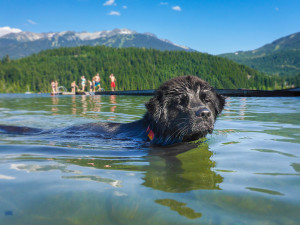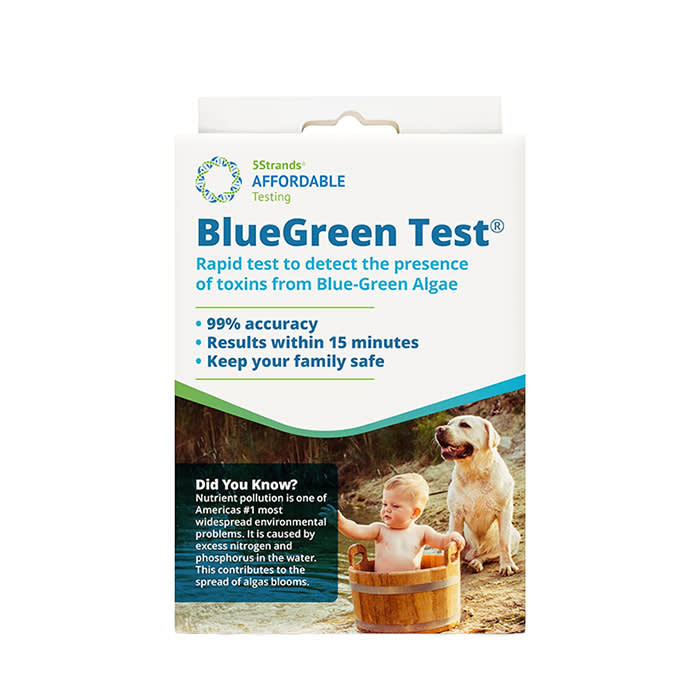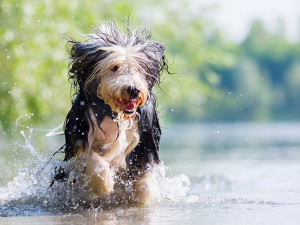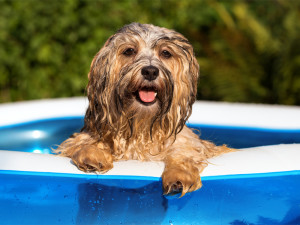Why You Should Stay Far, Far Away From Blue-Green Algae This Summer
Consider getting a water-testing kit to keep your pup safe.
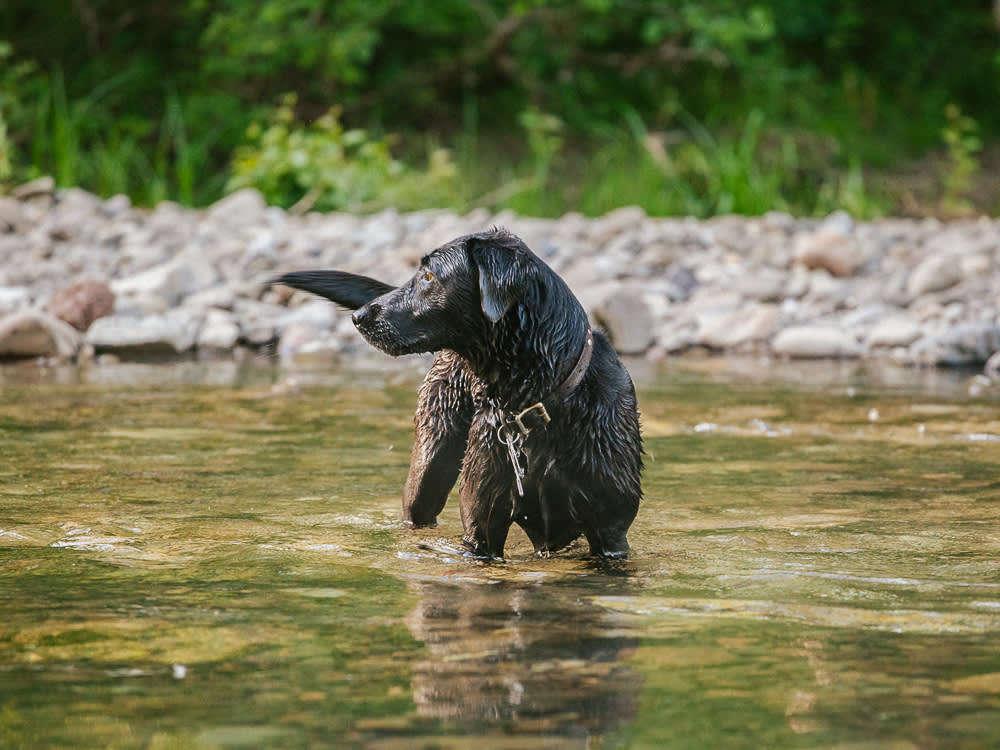
Share Article
Blue-green algae and the danger it poses for pups pops up in the news every time hot weather comes around. This spring and summer, it has already been spotted in Californiaopens in a new tab, New Yorkopens in a new tab, Floridaopens in a new tab, Kansasopens in a new tab, and Texasopens in a new tab, and it will no doubt pop up in other places, including where you live. The week of July Fourth, two dogs, in Southern California and in Texas reportedly diedopens in a new tab from blue-green algae poisoning.
While most algae are harmless, some species of blue-green algae produce toxins that can kill a dog within minutes. Dogs who survive (who are often exposed to low levels of toxins) may develop health problems, such as chronic liver disease and possibly tumorsopens in a new tab — damage that may go unnoticed until it’s severe.

Get (totally free) deals for food, treats, accessories, tech, and way more pet parenting must-haves.
opens in a new tabResearchers suspect many deaths are missed because people don’t even realize their dogs were exposed. Vets may not recognize the symptoms, and tests to detect the toxins can be costly and complex. (Blue-green algae can be harmful to humans, too, but deaths are rare.)
In recent years, cases of blue-green algae poisoning in dogs have surged because nutrients like phosphorous and nitrogen get washed into waterways from agriculture, lawns, and other sources. Climate change also plays a role. Below, learn how to keep your dog safe from blue-green algae this summer.
How to spot blue-green algae
Also known as cyanobacteria, blue-green algae thrives in fresh bodies of water during warm weather. There are plenty of ways to differentiate blue-green algae from harmless green, brown, and other kinds of algae.
For one thing, its color isn’t always blue-green. It can also be reddish-purple or brown and other hues. Normally, algae are equally distributed throughout the water. But blue-green algae produces large blooms that are often concentrated along the water’s edge (it may look like slimy paint). These can still taint the water after it looks clear. Blooms may last for a week; their toxins may last three weeks.
Even when blue-green algae isn’t floating on the surface, it may lurk below, moving up and down with available light and nutrients. At night, it often floats to the top, forming a scum. Wind and waves can then concentrate toxic blooms in shallow areas or at the water’s edge — right where dogs like to splash, wade, or drink. The water doesn’t taste bad, vets say, so dogs will lap it up. Some like to gobble down dried algae mats.
How to protect your dog from blue-green algae
The Environmental Protection Agency (EPA) recommends that outingsopens in a new tab with pets to lakes, rivers, and streams include an algae check. Dogs should not drink, swim, or wade in water that is discolored, smells bad, or where there are mats of algae, foam, or scum. If your dog does get into scummy water, rinse them off with tap water immediately, making sure they don’t lick algae from their fur. The toxins can also be absorbed through their skin. If a dog shows signs of poisoning, go to your vet right away.
Here are the signs of blue-green algae poisoning to look out for:
Weakness or staggering
Difficulty breathing
Drooling
Convulsions
Finally, be sure to report any blue-algae incidents to your state’s Public Health Departmentopens in a new tab to prevent other dogs from getting sick. You can also buy a testing kit to test the water you or your dog plan to swim in. Shop one option below.
References:
Sheila Pell
Sheila Pell is a freelance journalist who frequently writes about environmental issues. Her work has appeared in The Washington Post, Modern Farmer, San Diego Reader, The Bark, and American Forests. She lives in northern California with her husband and two large dogs.
Related articles
![Shepherd dog playing with yellow ball at the beach]() opens in a new tab
opens in a new tabHow to Keep Your Dog Safe at the Beach This Summer
5 tips to help your pup have fun in the sun — safely.
![Girlfriends lounging by pool in summer with large white dog.]() opens in a new tab
opens in a new tabMaking a Splash: How to Throw an Epic Dog Pool Party for Dogs
Here’s some advice on what you can do to make yours the best in the neighborhood.
![A dog with its head sticking out the window of a moving car.]() opens in a new tab
opens in a new tabHow to Plan a Dreamy Summer Road Trip With Your Dog
They are your favorite person anyway—why not plan the perfect vacation with them?
![Dave Coast with his small white dog on a beach]() opens in a new tab
opens in a new tabDave Coast’s 5 Favorite Dog-Friendly SoCal Beaches
The wellness expert shares his favorite spots for seaside strolls with his dog.
![Bearded Collie running in a lake]() opens in a new tab
opens in a new tabWhen Drinking Too Much Water Is Deadly
How to keep your swim fan safe.
![a dog in a dog pool]() opens in a new tab
opens in a new tabThe Best Dog Pools For Your Dog to Splash Around in This Summer
It’s summer fun time, baby.

